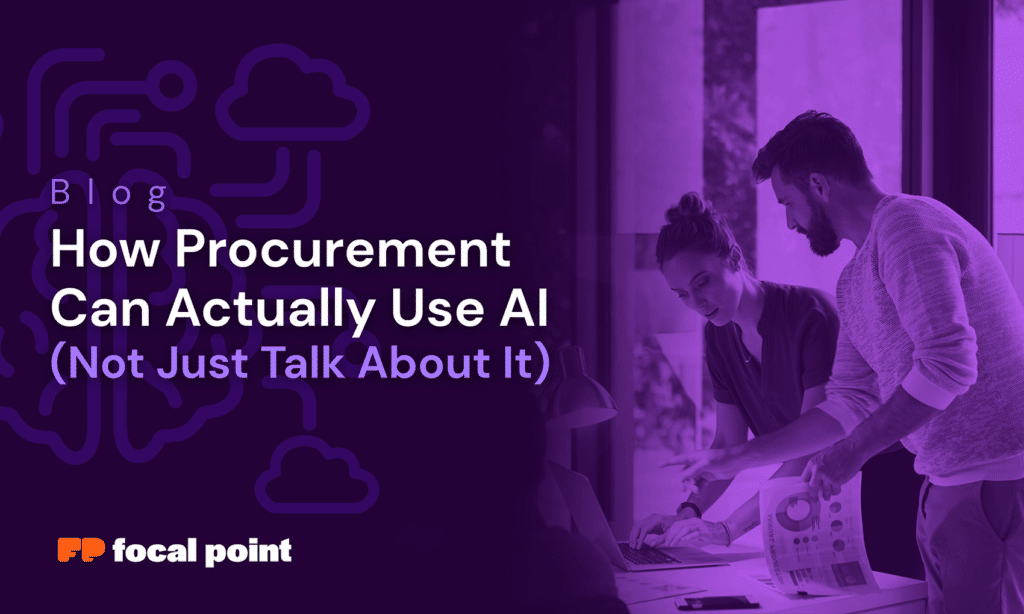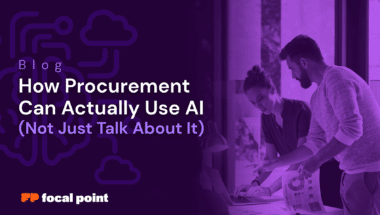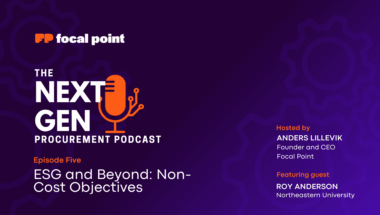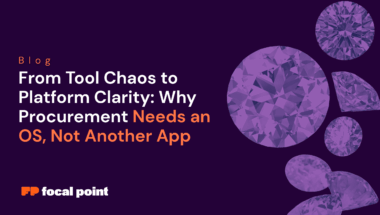Artificial intelligence has officially entered procurement’s daily vocabulary, but there’s a big gap between talking about AI and actually using it. The technology is here, it’s powerful, and it’s evolving faster than most teams can keep up with. But to make it valuable, procurement needs to go beyond experimentation and into execution.
This means understanding how to apply AI in context, how to turn insights into action, and how to orchestrate human expertise and machine intelligence into one unified process.
Here’s how to do it.
Context Is Everything
The quality of AI output depends entirely on the quality of the input, and in procurement, that means context. Generic queries lead to generic results, which is why contextual data makes AI useful.
Think about it: sourcing strategies for lithium in 2014 looked nothing like they do today. A decade ago, lithium was just a component in laptop batteries. Now, it fuels entire industries, from electric vehicles to home energy storage. Market dynamics, regulatory pressures, and technology trends all shifted, and so did the procurement playbook.
That same principle applies to your organization. AI tools perform best when they understand who you are, what you buy, where you operate, and how you’re regulated. Feeding that context into large language models turns broad market data into tailored, relevant insight.
Without context, AI is just guessing. With it, AI becomes a strategic partner.
Why Generic AI Falls Flat
Many procurement teams use AI tools to generate reports, category strategies, or market analyses, but most of what comes out looks impressive on the surface and meaningless underneath. That’s because the models are working with generic data instead of organizational reality.
A large enterprise buyer that spends $1 billion on steel has vastly different leverage and risk exposure than a small manufacturer spending $10 million. AI can’t know that unless it’s told.
Digitization isn’t optional. Clean, centralized, structured data is what allows AI to differentiate between “what’s true for everyone” and “what’s true for you.”
From Insights to Action
AI can now build sourcing strategies, identify risks, and analyze spend in seconds, but insight alone doesn’t move the needle. Procurement teams need systems that can turn AI outputs into orchestration.
When AI recommends reviewing a supplier contract or addressing a risk, the next step shouldn’t involve copy-pasting that insight into Excel or drafting an email, it should trigger a workflow. That’s the core of orchestration: connecting intelligence to execution.
Modern procurement technology can already do this. Dynamic task creation, automated follow-up, and real-time tracking turn AI-generated recommendations into tangible progress.
Smarter, Cheaper Risk Management
Risk used to be a reactive exercise, something addressed after a disruption hit. AI changes that.
Procurement teams can now deploy AI agents that continuously scan for supplier risks: negative press, cyber incidents, regulatory changes, or even activity on the dark web. What used to require costly third-party monitoring services now happens automatically, at scale, and in near real time.
Even better, risk management doesn’t have to increase cost. By identifying vulnerabilities earlier and uncovering innovation opportunities faster, AI-powered visibility can actually reduce overall spend.
5. Rethinking Category Strategy
Category management is one of the areas where AI has the most immediate impact. Historically, building a full category strategy, from spend breakdowns to supplier mapping and market analyses, could take weeks.
Now, it can happen in minutes.
AI can analyze internal data (spend, suppliers, contract terms, usage patterns) alongside external intelligence (market conditions, new entrants, pricing trends) to deliver insights specific to your organization. The result is a category plan that’s custom-built, not copy-pasted.
This also helps procurement teams prioritize differently. Instead of relying on one-size-fits-all RFPs, teams can make smarter decisions, when to sole-source, when to extend contracts, and when to pursue innovation.
The Future: AI Talking to AI
The next evolution of procurement won’t just be AI supporting humans, it’ll be AI interacting with other AI systems.
Suppliers will use their own AI engines to respond to sourcing requests, validate data, and manage updates. Procurement teams will use theirs to analyze, score, and act on that information in real time.
The result is an ecosystem where insight, action, and optimization all happen continuously, without the bottlenecks of manual work.
Final Thoughts
AI isn’t here to replace procurement professionals, it’s here to amplify them. The real opportunity lies in combining human judgment with machine precision: people set the strategy, AI accelerates it.
As procurement moves into this next era, the question isn’t whether AI can help, it’s how fast you can adapt your data, processes, and mindset to make it work for you.
Because when humans provide the context, and AI provides the speed, procurement finally operates at its full potential.



